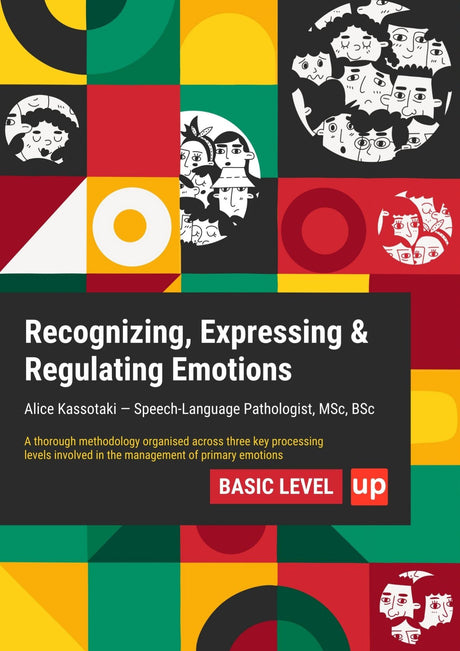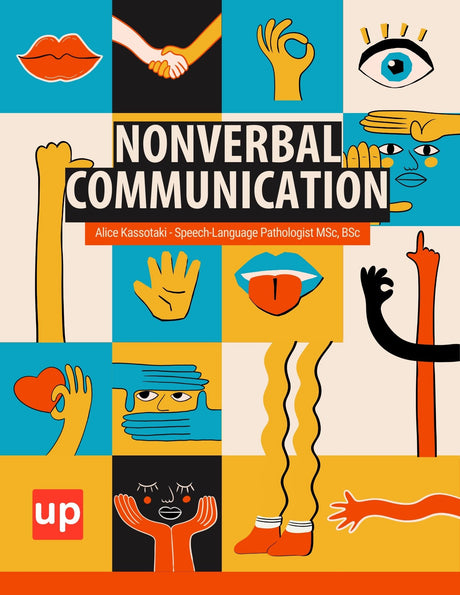Top Life Skills for Autism: Essential Tools for Independent Living
Life skills for autism are crucial for enabling independence and improving everyday living. These skills help individuals with autism manage daily tasks, boost their confidence, and smoothly interact with others. In this article, we’ll break down essential life skills like personal care, social interaction, and money management, offering practical advice for teaching these skills at home.
Key Takeaways
- Life skills are essential for individuals with autism, fostering independence, self-esteem, and overall quality of life.
- Teaching life skills at home through structured routines, visual supports, and hands-on practice significantly enhances independence and self-sufficiency.
- Developing social and communication skills is crucial for individuals with autism to navigate daily interactions and achieve success in various environments.
Understanding Life Skills for Autism

Life skills are the building blocks of independence. For individuals with autism, mastering these skills can significantly enhance their quality of life. These skills foster independence, boost self-esteem, and enable individuals to lead more fulfilling lives. Teaching life skills imparts knowledge and provides tools for increased self-esteem and happiness. These skills empower individuals with autism to take control of their lives, make decisions, and solve problems.
In the context of autism, life skills encompass a wide range of abilities—from executive functioning to practical living and personal care skills. Each category plays a vital role in daily living and long-term success. Teaching these skills should be tailored to the individual’s current life and future needs.
Continued learning support during the transition from school to adult life is crucial. Let’s delve deeper into each category to understand their unique contributions.
Executive Functioning Skills
Executive functioning skills are the cornerstone of independent living. These include organizing, planning, prioritizing, and decision-making. Mastering these skills makes daily tasks more manageable for those with autism. Strategies to help children develop executive functioning skills include using therapies, games, praise, and gradual exposure to tasks.
Visual supports like checklists, calendars, and picture schedules can be invaluable. Creating checklists facilitates daily routines, while smartphones for reminders and calendar management support independent living skills.
Practical Living Skills
Practical living skills are essential for self-sufficiency. Skills such as cooking, cleaning, and household management enable individuals with autism to manage their daily lives effectively. Cooking skills, for example, help develop planning, organization, choice-making, measuring, following instructions, sequencing, and fine motor skills.
Cooking also addresses sensory difficulties by exposing children to various sensory experiences, increasing their tolerance and acceptance. Cleaning skills promote independence and responsibility, and breaking tasks into smaller steps with visual aids can enhance learning.
Personal Care Skills
Personal care skills are foundational for self-care skills in individuals with autism. These skills are crucial for maintaining hygiene and social acceptance. Understanding and adhering to personal care routines, such as brushing teeth, bathing, and dressing, are vital for overall well-being and social interactions.
These routines not only ensure physical health but also contribute to a person’s self-esteem and social integration.
Teaching Life Skills at Home

Teaching life skills at home effectively helps individuals with autism become more independent. Proper support enables many individuals with autism to live independently, highlighting their potential. Daily living skills, such as personal care and basic household chores, promote self-sufficiency. A structured approach to teaching life skills includes using natural environments and engaging in real tasks related to the skills being taught. For example, involving children in meal preparation during snack time is a practical way to teach.
Preparation, practice, reinforcement, and visual supports are key home strategies for teaching life skills. Hands-on instruction is recommended for teaching important life skills. Verbal practice or using images and words creates a structured teaching method.
Using visual schedules with images and time indicators can assist individuals with autism in managing their daily tasks. Let’s explore these strategies in more detail.
Preparation and Planning
Effective home teaching of life skills requires careful preparation and planning. Observing a child’s actions helps assess their skill level. Considering a child’s unique needs, abilities, and personal goals individualizes the teaching approach.
Consistent routines decrease anxiety and smooth transitions between tasks. Structured schedules offer predictability, alleviating anxiety during transitions. Visual cues and supports, like checklists, effectively teach life skills.
Practice and Reinforcement
Practice and reinforcement help individuals with autism grasp essential daily tasks. Ample practice and interaction opportunities enhance effective communication. Modeling behaviors and reinforcing positive interactions effectively teach social cues.
Role-playing social scenarios helps children with autism practice recognizing and responding to social cues. Using real currency reinforces money understanding, and activities like playing store enhance coin recognition and value understanding.
Using Visual Supports
Visual supports are essential for helping individuals with autism understand and manage their daily tasks effectively. Visual supports, like pictures or symbols, significantly enhance communication effectiveness. Structured routines and visual schedules enhance the effectiveness of teaching life skills to children with autism.
Incorporating visual elements like color coding into to-do lists enhances clarity and helps prioritize tasks. To-do lists aid in visualizing tasks, enhancing focus and task completion.
Books and Materials from Upbility for Autism Life Skills
Upbility offers a wide range of resources designed to support the development of life skills in individuals with autism. These materials are crafted to cater to various skill levels and learning styles, ensuring that each individual can benefit from tailored educational content. The books and materials cover essential life skills such as personal care, social interaction, money management, and executive functioning. They provide practical exercises, visual aids, and interactive activities to engage learners and reinforce skill acquisition.
These resources are invaluable for parents, educators, and therapists who aim to teach life skills effectively. By integrating Upbility's materials into everyday learning, individuals with autism can gradually build confidence and independence. The comprehensive approach ensures that each skill is broken down into manageable steps, making it easier for learners to grasp and apply in real-life situations.
In addition to books, Upbility offers digital resources that can be accessed online, providing flexible learning opportunities. These digital tools include interactive games and exercises that make learning fun and engaging. By incorporating technology, Upbility ensures that learners can practice life skills in a modern and accessible way.
Overall, Upbility's resources are a valuable addition to any educational toolkit, empowering individuals with autism to develop the life skills necessary for independent living and a fulfilling life.
Developing Social Skills

Social skills are vital for autism education because they enhance self-care, social interaction, and overall success in various settings.
Social interaction and communication skills are often challenging for individuals with autism. Essential social skills include:
- Navigating conflict
- Talking on the phone
- Reading social cues
- Understanding body language
- Cultivating friendships
Autism spectrum can complicate communication with others, making it difficult to build relationships.
Collaboration and communication skills are crucial for effective interactions in work and social settings. Understanding and practicing social interactions, such as greetings and maintaining personal space, can significantly enhance work relationships.
Developing social skills focuses on communication skills and understanding social cues. Teaching these skills helps individuals with autism interact more effectively in social and work environments. Recognizing different jobs’ interaction levels helps tailor job choices for individuals with autism.
Considering the work environment’s noise level is also important for job selection. Let’s dive deeper into these aspects.
Communication Skills
Communication skills are essential for self-expression and navigating social situations. Individuals with autism can develop verbal and nonverbal language skills, assistive technology, and functional communication tools. Ample interaction practice helps children with autism communicate effectively.
Role-playing various scenarios helps children with autism practice seeking help in real-life situations. Empathy and recognizing others’ emotions can be cultivated in individuals with autism.
Understanding Social Cues
Understanding social cues is crucial for effective communication and social communication community participation. Teaching individuals with autism to recognize and respond to social cues improves their interactions. Role-playing, modeling behaviors, and using visual supports help children understand and navigate social situations.
Money Management Skills

Money management skills are crucial for financial independence. Involvement in paying bills and daily routine activities can help children learn important money skills. Teaching money management skills is essential for financial independence. These skills include counting money, budgeting, and spending. Mastering these skills allows individuals with autism to manage finances effectively and make informed decisions.
Practical activities and technology aid in developing money management skills. Hands-on activities like playing store and counting money effectively teach money management skills. Using technology like budgeting apps helps individuals with autism manage finances more effectively.
Let’s explore these aspects in more detail.
Counting Money
Coin identification and counting money are foundational money management skills. Hands-on activities, such as playing store and counting money, are effective ways to teach these skills.
Teaching expense tracking is essential for developing effective budgeting skills. Incorporating technology, like budgeting apps, can assist individuals with autism in managing their finances more effectively.
Budgeting and Spending
Budgeting and spending skills are crucial for financial independence and effective expense management. Creating a budget together helps autistic individuals plan their expenses and track spending. Discussing financial vulnerability enhances understanding and management of financial risks.
Mastering these skills allows individuals to make informed financial decisions and maintain stability.
Time Management and Organizational Skills
Time management and organizational skills enhance employability and smooth navigation of daily schedules. Effective time management gives individuals with autism more control over their day, reducing anxiety and stress. Setting timers and practicing time estimation are hands-on activities that teach these skills. Simple schedules and timers can help teach time management and routines.
To-do lists and routines are practical strategies for teaching time management and organizational skills. To-do lists prioritize tasks, ensuring important activities are completed first. Planning the day with to-do lists helps individuals manage time effectively and reduces overwhelm.
Let’s discuss these strategies further.
Using To-Do Lists
To-do lists are a crucial aspect of time management. To-do lists prioritize tasks, ensuring important activities are completed first. Planning the day with to-do lists helps individuals manage time effectively and reduces overwhelm.
This tool significantly enhances the ability to organize daily activities and maintain focus on priorities.
Scheduling and Routine
Structured daily routines reduce anxiety by providing predictability. Consistent routines develop independent living skills in children with autism. These routines improve time management, allowing for smoother daily experiences.
Creating routines supports independent living and effective responsibility management.
Job Skills and Employment Readiness
Job skills development and employment preparation are critical for individuals with autism to achieve independence. Skills needed at home often apply to the job market, enabling independent work and ownership. Job coaches provide essential support for securing and maintaining employment. Teaching these life skills prepares individuals for the workplace, enhancing employability and job satisfaction.
Workplace behavior and job search/application strategies are essential for employment readiness. Effective communication with managers, coworkers, and clients boosts employability. Recognizing different jobs’ interaction levels helps tailor job choices for individuals with autism.
Self-reflection helps identify jobs that match strengths and interests, leading to better job satisfaction. Let’s explore these aspects in more detail.
Workplace Behavior
Understanding appropriate workplace behavior helps individuals with autism thrive in their jobs. Effective communication with managers, coworkers, and clients boosts employability. Recognizing social cues and responding appropriately in various situations are crucial.
Teaching these skills helps individuals navigate the workplace successfully and build positive relationships with colleagues.
Job Search and Application
Choosing the right job ensures a positive work experience for individuals with autism. Self-reflection identifies jobs that match strengths and interests, leading to better job satisfaction.
When selecting a job, consider factors like interaction level, noise level, and the possibility of working from home. These considerations ensure the work environment suits the individual’s needs and preferences.
Personal Safety Skills
Personal safety skills are essential for individuals with autism. These skills are crucial for confidently navigating their environment and ensuring safety. Basic safety concepts include road safety and emergency response strategies. Teaching personal safety skills helps individuals with autism understand and avoid potential hazards. Various methods can reinforce personal safety concepts. These methods may include visual supports, social stories, and role-playing activities.
Recognizing risks and practicing emergency responses are crucial for personal safety. Educating individuals on specific hazards like wandering helps prevent potentially dangerous situations. Practicing emergency drills with visual aids helps children with autism learn appropriate responses. These practices ensure individuals understand safety protocols and can respond appropriately in crises.
Recognizing Risks
Individuals with autism should learn about specific hazards and strategies to avoid them. Breaking safety skills into smaller steps enhances understanding and retention. Practicing emergency drills with visual aids helps children with autism learn appropriate responses.
These practices ensure individuals understand safety protocols and can respond appropriately in real-life emergencies.
Emergency Responses
Practicing emergency responses is crucial for individuals with autism to ensure they can react appropriately in crisis situations. Children with autism can learn to dial emergency numbers like 911 through consistent practice. Identifying safe places is an important part of emergency preparedness. These practices help individuals remain calm and take appropriate actions during emergencies, enhancing their overall safety.
Self-Advocacy and Independence

Teaching self-advocacy skills to children with autism empowers them to express their needs and make choices. Advocacy teaches children that autism can be viewed as a unique strength, helping reshape their perception of disability. Developing independence allows individuals with autism to manage their responsibilities and contribute effectively in a workplace setting. Essential life skills include self-value, self-care, and social skills. Teachers can support the development of self-advocacy skills by fostering a collaborative environment, encouraging participation, and offering choices.
Focusing on seeking help and making choices is crucial for fostering self-advocacy and independence. Learning to make choices empowers children with autism to take responsibility for their decisions. Informed decision-making can lead to greater independence for individuals with autism. Let’s explore these aspects further.
Seeking Help
Children with autism can benefit from social stories, role-playing scenarios, and visual supports to recognize and express their feelings. It’s essential for children with autism to learn how to take or ignore the advice they receive. Developing self-care and social skills enables children with autism to enlist others for help when needed.
Teaching children to evaluate different types of advice helps them make informed decisions.
Making Choices
Learning to make choices empowers children with autism to take responsibility for their decisions. Informed decision-making can lead to greater independence for individuals with autism. By teaching children to consider their options and make thoughtful choices, we help them build confidence and autonomy.
These skills are crucial for achieving self-sufficiency and navigating adult life effectively, including basic life skills and develop essential life skills, as well as functional life skills and learning life skills, and life skill.
Summary
Teaching life skills to individuals with autism is a transformative approach that enhances their independence, self-esteem, and overall quality of life. From executive functioning to practical living, personal care, social skills, money management, and job readiness, these essential tools empower individuals to navigate their daily tasks with confidence. By providing structured support, clear instruction, and consistent practice, we can help individuals with autism achieve greater self-sufficiency and fulfill their potential.
In conclusion, the journey to independence for individuals with autism is paved with patience, understanding, and a commitment to teaching essential life skills. By focusing on their unique strengths and needs, we can create a supportive environment that fosters growth and empowerment. Remember, every small step towards independence is a significant milestone. Let’s continue to advocate for and support individuals with autism on their path to a fulfilling and independent life.
Frequently Asked Questions
Why are life skills important for individuals with autism?
Life skills are essential for individuals with autism as they promote independence, enhance self-esteem, and contribute to leading more fulfilling lives. Emphasizing these skills can significantly improve overall quality of life.
How can visual supports aid in teaching life skills to children with autism?
Visual supports, including checklists and picture schedules, are essential in teaching life skills to children with autism as they improve communication and facilitate task management. Implementing these tools can lead to greater independence and understanding in daily activities.
What are some effective methods for teaching money management skills to individuals with autism?
Utilizing hands-on activities such as playing store, counting money, and employing budgeting apps can effectively teach money management skills to individuals with autism. These interactive methods enhance learning and engagement.
How can individuals with autism develop appropriate workplace behavior?
Individuals with autism can develop appropriate workplace behavior by enhancing their communication skills with managers and coworkers, and by learning to recognize social cues. This approach facilitates successful workplace navigation and fosters a productive work environment.
What strategies can help children with autism recognize and respond to emergency situations?
Implementing emergency drills with visual aids, teaching children how to dial emergency numbers, and identifying safe locations are effective strategies to help children with autism recognize and respond to emergency situations. These strategies enhance their preparedness and confidence during critical incidents.
References
- American Psychiatric Association. (2013). Diagnostic and statistical manual of mental disorders (5th ed.). Arlington, VA: American Psychiatric Publishing.
- Bellini, S., & Akullian, J. (2007). A meta-analysis of video modeling and video self-modeling interventions for children and adolescents with autism spectrum disorders. Exceptional Children, 73(3), 264-287.
- Koegel, R. L., Matos-Freden, R., Lang, R., & Koegel, L. K. (2012). Interventions for children with autism spectrum disorders in inclusive school settings. Cognitive and Behavioral Practice, 19(3), 401-412.
- Wong, C., Odom, S. L., Hume, K. A., Cox, A. W., Fettig, A., Kucharczyk, S., ... & Schultz, T. R. (2015). Evidence-based practices for children, youth, and young adults with autism spectrum disorder: A comprehensive review. Journal of Autism and Developmental Disorders, 45(7), 1951-1966.









